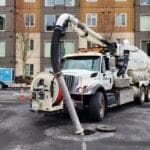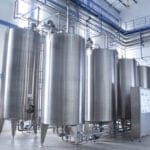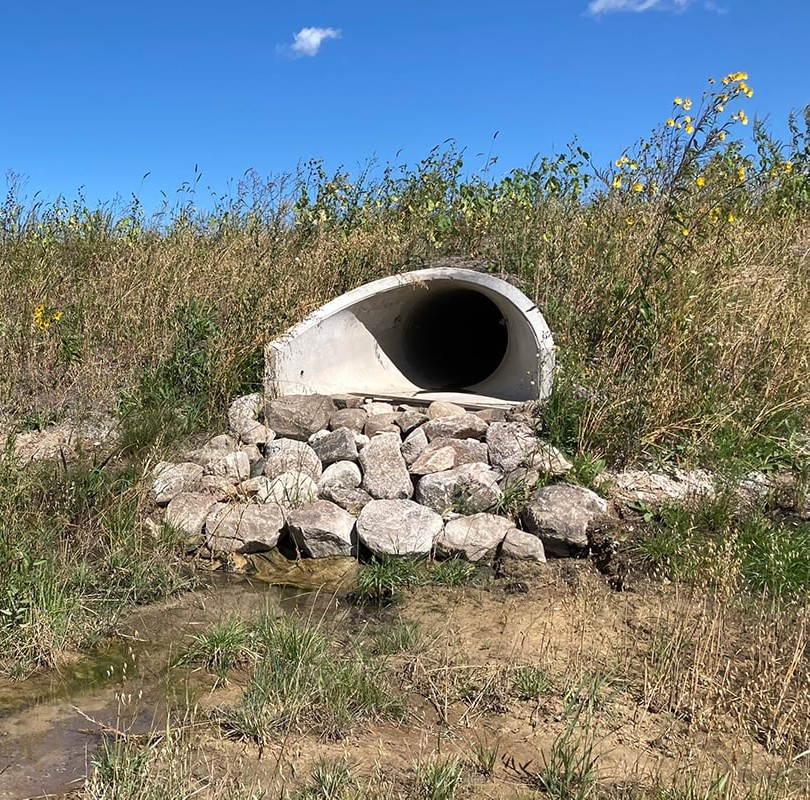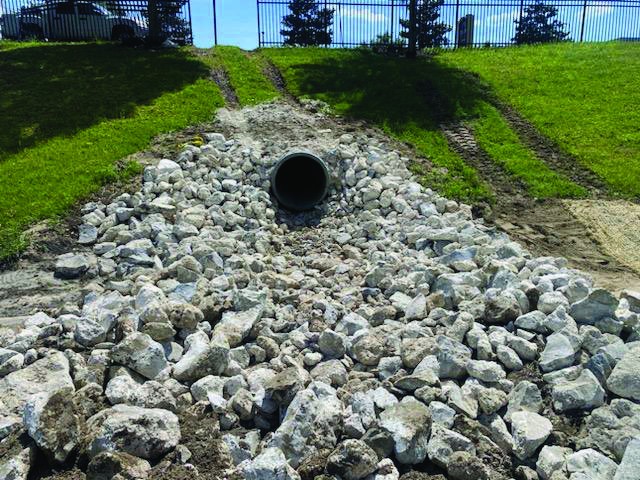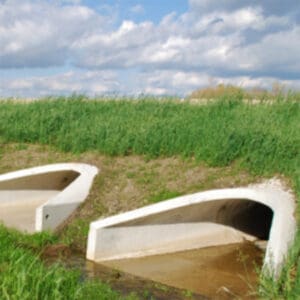What is a Culvert?
Culverts are man-made structures that channel water safely under obstacles, such as roadways and railroads. They are essential to our infrastructure, reducing erosion and flooding around roads and buildings.
Culverts are so common that they’re hardly noticeable. If you notice a road intersecting a stream, a culvert is likely running beneath it. Without them, communities would suffer from unsafe driving conditions, sediment displacement and hazardous standing water.
Many municipalities and property owners use culverts in their stormwater management plans. Culverts are especially common in hilly areas with rivers, as they prevent floods, property damage and other drainage issues.
What are the Benefits of Culverts?
Culverts protect people, structures and the environment. They channel water beneath roadways and buildings to prevent flooding on the surface. If water pools on a road or around a building, it will sink into the asphalt or concrete, causing it to break down structurally.
If roads constantly flood, they’ll need to be repaired. This translates to higher maintenance costs, longer commute times and more disgruntled drivers. A culvert prevents these issues by directing water beneath the roadway rather than letting it flow on top of or into the road.
Types of Culverts
There are four main types of culverts: box culverts, bridge culverts, arch culverts and pipe culverts. Stormwater engineers survey a property before installing a culvert to determine which type would be safest and most effective.
Box Culverts
Box culverts are the most common type. They are usually made of concrete and have headwalls at each end. A culvert headwall is designed to control erosion and water flow.
Box culverts may also feature wing walls, which function similarly to culvert headwalls. Wing walls and headwalls work together to make the culvert more effective and resistant to erosion.
Box culverts are regarded for their sturdiness and high water flow capacity.
Bridge Culverts
Despite some confusion, regulatory authorities distinguish between “bridge culverts” and bridges based on length. A structure is a bridge if it spans more than 20 feet, and it is a culvert if it spans 20 feet or less. A bridge culvert also functions as a bridge, allowing people and cars to pass above a waterway.
A bridge culvert functions like any other culvert, controlling water flow and preventing erosion.
Arch Culverts
Arch culverts, as their name suggests, are typically shaped like semicircles. They are formed by a concrete slab on the bottom and concrete or stone walls around, helping water flow under bridges that span waterways.
An arch culvert’s design keeps natural streambeds healthy and reduces disturbances to the surrounding ecosystem.
Pipe Culverts
Pipe culverts, sometimes called drainage culverts, are commonly used as storm sewers. They are built with an inlet and outlet structure to ensure proper drainage.
A pipe or drainage culvert can be made of several materials, including plastic, steel or concrete. They are sealed with grout or concrete to prevent standing water and leaks.
Culvert Barrel Materials
Culverts come in all shapes and sizes and are constructed with various building materials. They can be as complex as a reinforced concrete structure or as simple as a pipe surrounded by dirt.
Metal, concrete and plastic are the most common culvert barrel materials. These barrels are surrounded by similar materials and sealed with a coating that accounts for local soil types, temperature and runoff.
Metal
Galvanized steel and aluminum are the most common metals used for culverts. These materials are usually corrugated and coated with zinc alloys, concrete or mortar. Metal culverts are highly durable and weather-resistant.
Concrete
Stormwater engineers use concrete for its load-bearing capacity, durability and corrosion resistance. Concrete culverts are highly reliable and typically do not require special coating.
Plastic
Plastic is an affordable, long-lasting material with a much lower load-bearing capacity than concrete. It also struggles in scorching temperatures and can be corroded by certain chemicals.
Plastic culverts are a wise choice for most drainage purposes, but it is important to consult a stormwater management professional before installing one.
Under the right circumstances, a high-density polyethylene (HDPE) culvert is a highly reliable, cost-effective addition to your property. These systems play a crucial role in a stormwater management plan.
Over time, culverts, like any stormwater control asset will fail- especially without maintenance. The repair process depends on the extent of damage, use case of the area and material of the culvert.
Culvert Maintenance & Stormwater Management with AQUALIS
Culverts are necessary stormwater control measures (SCMs) for property owners near water or flood-prone climates. They control flooding, prevent erosion and ensure regulatory compliance.
AQUALIS’s stormwater management professionals inspect and maintain culverts across the United States. We thoroughly test your aboveground assets and stormwater outfalls to ensure your property is safe, compliant and profitable.
Our maintenance solutions are tailored to your property’s specific needs. Regular maintenance is essential to prolong the lifespan of your stormwater systems. By scheduling regular servicing with AQUALIS, you will enjoy a higher return on your investments and avoid serious regulatory violations.
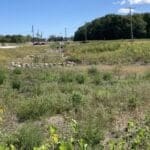 Kenosha, Wis. Highway KR Regenerative Stormwater ConveyanceThe Root-Pike Watershed Initiative Network Kenosha County, and others worked with AQUALIS to design and implement an innovative solution for stormwater control along Highway KR.
Kenosha, Wis. Highway KR Regenerative Stormwater ConveyanceThe Root-Pike Watershed Initiative Network Kenosha County, and others worked with AQUALIS to design and implement an innovative solution for stormwater control along Highway KR.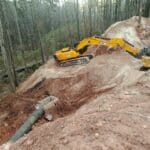 Durham, N.C. Sinkhole Leads to Stormwater System RehabilitationThe tenant on this property noticed a depression that opened to the ground below and notified the property owners.
Durham, N.C. Sinkhole Leads to Stormwater System RehabilitationThe tenant on this property noticed a depression that opened to the ground below and notified the property owners.